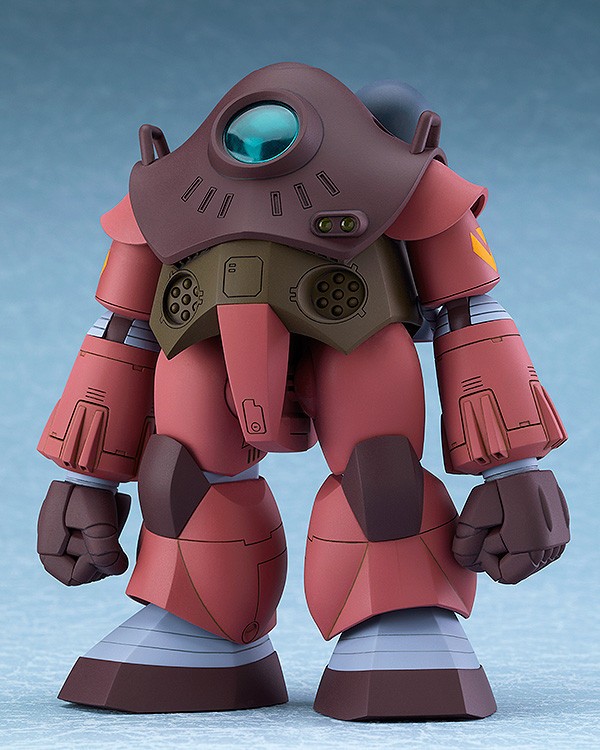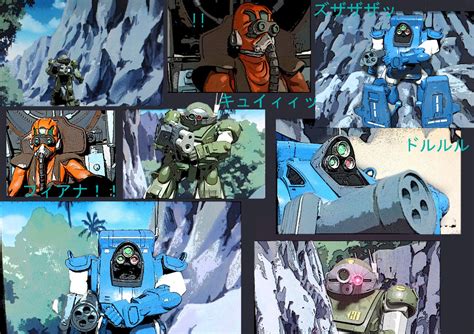As currently written, the MFØ rules for exotic and hazardous terrain effectively penalizes all players except the defender, who sets up camp where they’re safest and can roll their full complement of dice. The best move for the defender is to set up in such a way that their frames don’t require a specialized system, and set up outside the effect of the hazardous terrain, which then requires the other players to have specialized systems that takes up one of their system slots whether they wind up setting up in hazardous terrain or not.
By the time they get to trying to seize the defender’s stations — a defender who, you’ll recall, has four systems per frame to the attackers’ three, and is only one good/bad roll away from being better off than the second place player — the attackers have been chewed up and are starting to look at each other’s now-underdefended stations where the specialized systems still count for something.
The entire time, the odds that the defender is going to step out into hazardous areas and take the penalty of a white die are very slim. The primary attacker’s best target is the secondary attacker, who has less materiél with which to return fire and is almost certainly closer. And knows that their only legit target is the defender, who they can’t defeat alone.
A Second Edition Kind of Hazard
So let’s try a new way of running hazards. In this test there are three characteristics terrain can have: Rough, Harmful, and Revealing. They can have more than one at a time, and movement systems can allow you to cross over them, though they still have their effects if you start or end your turn there.
Rough terrain — swamps, tangled wreckage, creeks — is terrain that a frame may enter or leave normally, but not both in the same turn.
Harmful terrain — lava, crushing water depth, minefields — is terrain that automatically rolls a damage die on the frame when the frame enters the terrain, doing damage on a 5 or 6.
Some terrain can be more dangerous than others, and so might roll two dice against the frame, instead.
Revealing terrain — under streetlights, the ridge of a sand dune, standing in front of a broadcasting antenna — is terrain that makes a frame particular vulnerable by rolling a yellow die against it. Like other yellow dice, it will replace a lower one.
Laying out the table
Before play, the winner of the previous game gets to say what hazardous terrain will be like, since they’re getting to set the parameters of the next battle.
They will say the types of hazard and what its characteristics are. “There will be a creek, which is rough terrain, and a bridge over it, so when you’re up on it, it’s revealing.” Or “There are tanks of toxic sludge. When you destroy them, they turn into a big pool that’s harmful, one die. There’s a big open tank of molecular acid in the middle of the table that does two dice.” Or “This is going to be a beach assault. The shallows are rough terrain and the mines on the beach are hazardous.”
Terrain only really matters to play if:
• You have to avoid it, reducing your speed toward your objective
• You have to cross it, accepting the dice it places on your frame.
That means that it’s probably a good idea to put your stations inside or across terrain that you have systems for and your opponents don’t. Of course, that’s a guess you have to make while configuring your frames and your friends are trying to outplan you.
Frame Design

It was surprisingly hard to find an image of this guy. OK, not that surprising.
The question right now is if it’s ever worth it to have a specialized system when you don’t know enough about the layout of the table in planning to make an informed strategic decision.
So let’s add another element to test:
When you’re communicating with your friends, either by consensus or by the previous winner’s whim, say what 2 to 3 kinds of terrain exist: “There’s a runway that’s revealing and the breakwater is rough.” “The river is rough and its rapids are additionally harmful, and the bridge is revealing.”
Then you put an additional system on any frames you want to specialize for one of those environments. You can’t lose it; it’s just marking which frames can enter which kind of terrain without suffering its effects. Little air tank for underwater, a metal detector for mines, carbon panels for exposed road, snowshoes for lava.
Return your results!
Join us at the Mobile Frame University Discord channel and report your results! Take pictures in play and tell us all how it went down!


Okay, so the only issue I have is with this one section “Before play, the winner of the previous game gets to say what hazardous terrain will be like, since they’re getting to set the parameters of the next battle.” In roughly 29 out of 73 games that I have records for, the winner was not at the next game. That doesn’t seem exactly fair.
If I am not mistaken, the current rulebook says that if you are playing a campaign, then the winner of the previous match decides battle conditions. So what he said would only apply for campaigns, otherwise all players would just have to agree beforehand.